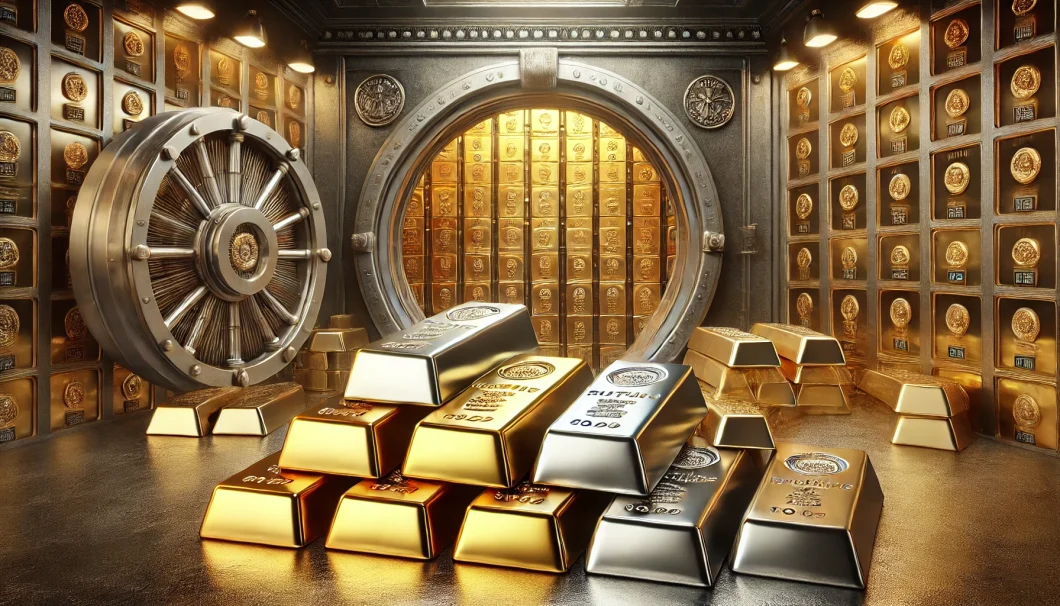
Precious metals have been valued for their beauty, rarity, and utility for thousands of years. From ancient civilizations to modern-day economies, metals like gold, silver, platinum, and palladium have played a crucial role in trade, currency, and jewelry. Today, these metals are often sought after in the form of bullion, which offers a tangible and secure way to preserve wealth. This blog post delves into the rich history of precious metals bullion, its various forms, and why it remains a popular investment choice in today’s volatile economic environment.
The Historical Significance of Precious Metals
Throughout history, precious metals have been synonymous with wealth and power. Ancient Egyptians regarded gold as the flesh of the gods, using it in temples, tombs, and sacred objects. The Greeks and Romans also placed high value on gold and silver, minting coins that became the foundation of their economies. These metals were not only a medium of exchange but also a symbol of prosperity and influence.
In the Middle Ages, European monarchs and governments accumulated vast reserves of gold and silver, fueling exploration and conquest. The quest for these precious metals was a driving force behind the Age of Exploration, as explorers like Columbus sought new lands and resources to enrich their patrons. Over time, the global circulation of gold and silver facilitated international trade and the development of complex financial systems, laying the groundwork for modern economics.
What is Bullion?
Bullion refers to precious metals in bulk form, typically cast into bars, ingots, or coins. The value of bullion is determined primarily by its weight and purity, rather than its face value or any artistic merit. Bullion can be made from gold, silver, platinum, or palladium, with gold and silver being the most common.
Gold bullion, in particular, is often seen as a “safe haven” asset, prized for its ability to retain value over long periods, especially during economic downturns. Silver bullion, while less expensive than gold, has industrial applications that add to its value. Platinum and palladium bullion are rarer but are also sought after for their use in various industries, including automotive and electronics.
Forms of Precious Metals Bullion
Precious metals bullion comes in several forms, each with its unique advantages and considerations. Gold and silver coins, such as the American Gold Eagle or the Canadian Silver Maple Leaf, are popular among investors and collectors alike. These coins are minted by governments and often have a guaranteed purity and weight, making them a trusted investment.
Bars and ingots, on the other hand, are typically larger and can be more cost-effective for those looking to invest in larger quantities of precious metals. These are often produced by private mints or refineries and come in various sizes, from small one-ounce bars to large 400-ounce gold bars commonly held by central banks.
Rounding out the options are rounds, which are coin-shaped but not legal tender. Rounds are favored for their lower premiums over spot prices and are often chosen by those looking to maximize their investment in precious metals.
The Role of Bullion in Modern Economies
In the modern financial landscape, precious metals bullion continues to be a cornerstone of wealth preservation. Central banks around the world hold significant reserves of gold bullion as a hedge against inflation and currency devaluation. During times of economic uncertainty, investors often flock to gold and silver bullion as a stable store of value.
The 2008 financial crisis is a prime example of how bullion can serve as a financial lifeboat. As stock markets crashed and currencies wavered, the price of gold surged, reaching all-time highs. This trend has repeated in various forms over the years, reinforcing the perception of gold bullion as a reliable investment during turbulent times.
Silver bullion has also seen increased demand, particularly due to its dual role as both an investment and an industrial metal. The rise of green technologies, such as solar panels, has boosted the demand for silver, further solidifying its value in the global market.
Investing in Precious Metals Bullion
Investing in precious metals bullion offers several benefits, including diversification, liquidity, and tangible ownership. Unlike stocks or bonds, which can be affected by corporate performance or government policies, bullion represents a physical asset that retains intrinsic value. This makes it an effective hedge against inflation, currency fluctuations, and other financial risks.
Diversification is another key advantage of investing in bullion. By including precious metals in an investment portfolio, investors can reduce their overall risk. This is because the price of bullion often moves inversely to traditional financial assets like stocks and bonds. When the value of these assets falls, the price of gold and silver typically rises, balancing the overall performance of the portfolio.
Liquidity is also a significant benefit of bullion. Precious metals can be easily bought and sold in global markets, making them a flexible investment. Whether you own gold coins, silver bars, or platinum ingots, you can convert them to cash relatively quickly, especially in times of financial distress.
Risks and Considerations
While investing in precious metals bullion offers many advantages, it is not without risks. The price of gold and silver can be volatile, influenced by factors such as geopolitical events, changes in monetary policy, and fluctuations in currency values. Investors need to be aware of these risks and consider their investment horizon and financial goals before diving into the bullion market.
Another consideration is the storage and security of bullion. Since it is a physical asset, bullion requires secure storage, whether in a home safe, a bank deposit box, or a professional vaulting service. The costs associated with storage and insurance can add up, reducing the overall return on investment.
It’s also important to be mindful of the premiums associated with purchasing bullion. The price of bullion is typically higher than the spot price of the metal due to manufacturing, distribution, and dealer markups. Investors should shop around and compare prices from reputable dealers to ensure they are getting the best value for their money.
Conclusion
Precious metals bullion has stood the test of time as a symbol of wealth and a reliable investment. From ancient empires to modern economies, gold, silver, platinum, and palladium have been treasured for their enduring value. Whether you are a seasoned investor or just starting to explore the world of precious metals, bullion offers a tangible and secure way to protect your wealth against economic uncertainties.
As with any investment, it’s essential to conduct thorough research and consider both the benefits and risks before committing to precious metals bullion. By understanding the history, forms, and market dynamics of bullion, you can make informed decisions that align with your financial goals. In an ever-changing world, the allure of precious metals bullion remains as strong as ever, offering stability in times of uncertainty.

